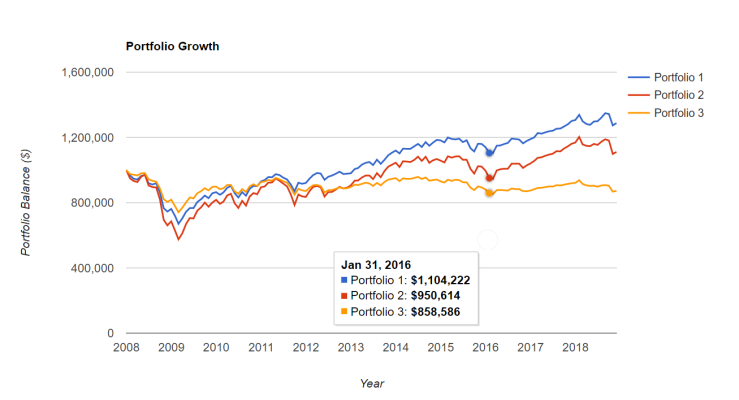Perhaps reading William Bernstein's most recent book, "Rational Expectations," while watching the stock market whipsaw and crater is not the best way to spend the holiday season but I haven't been able to put the book down.
Without boring folks with too many details I'll just say that I left the corporate world prematurely and during a time when the few books available on ER had titles like "how to retire and live well on less than a million dollars." If I had it to do over I'd have stuck it out as a corporate drone for another decade, but I don't.
DW and I (she's 55, I'm 62) can subsist on 4% of our nest egg but not the 3% SWR Bernstein recommends. Said nest egg is 55% short-duration Treasuries and 45% globally-diversified equities (slice-and-dice a la Merriman's Ultimate Buy & Hold).
I don't see any way given our relative youth and current returns from TIPs or inflation-adjusted annuities to covert assets to a LMP but am acutely aware that if the current volatility morphs into a 2008-style 50%+ multiyear cratering of equities our withdrawal rate will look quite toxic.
Bernstein himself says that the best LMP a retiree can have is delaying SS to age 70 but I must confess I've been tempted to pull the trigger now that I could claim early SS ($1650 a month now vs. $2190 at FRA of 66).
Part-time work is unlikely given our skill sets and how long we've already been out of the work force but I will look into it. I realize most who post here have done a far better job of planning but would welcome any suggestions.
Without boring folks with too many details I'll just say that I left the corporate world prematurely and during a time when the few books available on ER had titles like "how to retire and live well on less than a million dollars." If I had it to do over I'd have stuck it out as a corporate drone for another decade, but I don't.
DW and I (she's 55, I'm 62) can subsist on 4% of our nest egg but not the 3% SWR Bernstein recommends. Said nest egg is 55% short-duration Treasuries and 45% globally-diversified equities (slice-and-dice a la Merriman's Ultimate Buy & Hold).
I don't see any way given our relative youth and current returns from TIPs or inflation-adjusted annuities to covert assets to a LMP but am acutely aware that if the current volatility morphs into a 2008-style 50%+ multiyear cratering of equities our withdrawal rate will look quite toxic.
Bernstein himself says that the best LMP a retiree can have is delaying SS to age 70 but I must confess I've been tempted to pull the trigger now that I could claim early SS ($1650 a month now vs. $2190 at FRA of 66).
Part-time work is unlikely given our skill sets and how long we've already been out of the work force but I will look into it. I realize most who post here have done a far better job of planning but would welcome any suggestions.

